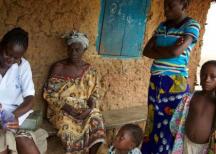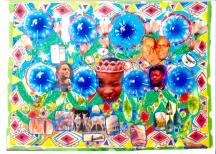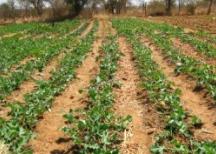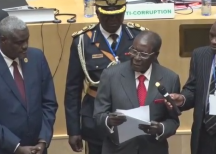South Africa is home to one of the largest Chinese communities in Africa, estimated at over 300,000. Most have arrived since the establishment of diplomatic relations between South Africa and the People’s Republic of China (PRC) in 1988, many of them as illegal overstayers. There are also an estimated 30,000 Taiwanese, the remainder of a once larger population of over 100,000 established during and after the 1970s, when the apartheid regime established close relations with Taipei.
But Yoon Jung Park has chosen to write about neither of these, but rather about the smallest and at first sight least significant of South Africa’s Chinese communities; the 10,000 to 12,000 South African-born Chinese whose community was already established in South Africa before and during the apartheid years.
On the surface this may seem a strange, even perverse and eccentric decision. But her perceptive and multi-dimensional analysis as well as being a fascinating story in its own right, establishes and deploys a conceptual apparatus which is useful and even essential in assessing and anticipating the possible future development and choices for more recently established Chinese communities in South Africa and elsewhere, and indeed in understanding the role and future of other diaspora communities in a globalised world.
Chinese people can be found in South Africa’s story from the 17th through to the 19th century, as slaves, convicts and artisans. But the ‘South African-born Chinese’ are not descended from them or from the 65,000 indentured workers brought into South Africa after 1904 to work in the mines, and repatriated after 1910. Instead, their parents or grandparents arived as independent free migrants from the 1870s onwards.
The South Africa into which they migrated was already a racially structured society, with restrictive legislation, originally targeted at indentured Indian or Chinese labourers, impeding their residence, movement and economic opportunities.
While the first generation were free to seek marriage partners in China and send their sons there for a Chinese education, the advent of formal apartheid after 1948, together with the effective closure of China after 1949, combined to isolate the community. The apartheid system also isolated them internally; officially ‘non-white’, they were too few in number to be treated in practice as a distinct racial group.
Their self-image combined a compensatory belief in an imagined ‘great and powerful China’ – itself increasingly detached from a rapidly-changing reality – and a refusal to accept the second-class status to which they were officially consigned.
In Park’s words, ‘these two factors created the primary tension that would define their lives: their sense of superiority and of belonging to a greater, imagined China, alongside their treatment variously as foreigners or second-class citizens (and later as ‘honorary whites’) in South Africa.’
Their strategy for coping with this situation was, as Park puts it, ‘to become better than the whites, chiefly through educational achievement and professionalisation’ thus seeking, often successfully, to gain respectability, acceptance and economic parity with their middle-class white equivalents. In addition they would choose professional avenues such as medicine, accountancy and engineering, in which they could be self-employed and therefore avoid the worst effects of employment discrimination.
As Park explains, ‘They became with very few exceptions, model citizens: law abiding, quiet, non-violent, non-confrontational, polite, educated and above all respectable.’ This strategy and its consequences were worked out over the generations in three successive stages, which Park identifies as, first, the older shopkeepers who had the harshest encounter with apartheid and like first-generation immigrants the world over, concentrated on working hard, keeping their heads down, avoiding trouble, and dreaming of returning ‘home’.
Next came what she identifies as the fence-sitter group, benefitting from the first real opportunities for upward mobility and social mixing, and finally the bananas (‘yellow outside, white inside’), with little remaining Chinese culture and increasingly seeing themselves as primarily South African.
This progression, familiar to the experience of many other migrant groups, was accompanied in the South African case by a policy of increasing relaxation of segregatory laws which, by an often-humiliating procedure of individual exemptions, would allow Chinese access to white amenities, schools and universities, and residential areas.
While never officially reclassifying the Chinese as ‘honorary whites’, this trend, reinforced by the ‘honorary white’ status granted officially to the Japanese for commercial reasons, had many of the same effects. But it was always insecure, involving Chinese, for example, in the offensive necessity of canvassing potential white neighbours on their doorsteps to get documentary confirmation that there were no objectors to their moving into a ‘white’ area.
Against this historical and sociological background Park discusses and analyses the shifting nature of Chinese identity in different generations and groups. On the one hand she finds an essentialised and idealised concept of ‘Chineseness’, which is found not only among those who maintain it, but also among some of the most completely South Africanised ‘bananas’ in the form of a feeling of guilt for what they feel they have lost.
Against this Park insists that ‘ethnicity is constructed and contested, as well as positional and relative’. One of the places where this is brought out most clearly is in her discussion of ‘remigrants’ – those South African Chinese who have emigrated and in their new countries find themselves associating with other South African Chinese.
‘Among these there are now Chinese South African Canadians, Chinese South African Australians, Chinese South African Americans and so forth… these various remigrants have increasingly layered, nuanced and complex identities that are sited in at least three geographically distant spaces. Furthermore the various parts of their identities shift as one becomes more salient than the others at various times, according to circumstance. And as with other Chinese South Africans, these identities shift with different life stages.’
Similar shifts in identity can be traced among the more recently-arrived Taiwanese South Africans. These and the more recent arrivals from the mainland also impact on the still-developing South African Chinese identity, sometimes as an indignant and irritated reaction to the stereotyping of all Chinese by the negative image of the most recent arrivals.
Park does not exclude the possibility of ‘the eventual construction of a pan-Chinese, multi-generational, multi-group Chinese South African identity’. But this should by no means be seen as inevitable, given what one scholar calls ‘the fluidity of Chineseness as a layered and contested discourse’.
Here as elsewhere the description and analysis is invaluable in understanding other diaspora, immigrant and minority experiences. The author makes comparative reference to studies of Chinese communities in Mississippi, and to the ‘Peranakan’ Straits Chinese. But there are many other parallels, not only with other Chinese communities in Africa and elsewhere but with the experiences of other diasporic communities – Indian, Greek, Jewish and Lebanese. Indeed, there are lessons for all of us, as in an increasingly globalised world, we are all, to a greater or lesser extent, becoming diasporic.
* Stephen Marks is a research associate with Fahamu’s China in Africa programme.
* Yoon Jung Park’s A matter of honour: being Chinese in South Africa is published by Jacana Media.
* Please send comments to [email protected] or comment online at http://www.pambazuka.org/.
- Log in to post comments
- 3271 reads



































